I borrowed a digital camera for a few minutes to register some dagger techniques interpreted from Talhoffer's Fechtbuch. The victims, who did most of this for the first time, are Tom De Jaegher as attacker and Jean Trembloy as defender. This is only a very small sample of the techniques displayed in the Fechtbuch. See also my review of the book here.
Note: since their first appearance on this page, these pictures have sparked heated discussions in certain forums. The author and the models make NO claims whatsoever on the effectiveness of the techniques, the sanity of grabbing a knife at the pointy end, or the suitability of these techniques for modern 'tactical folders' or lightsabers. Our only purpose is to reconstruct the techniques as explained in the Fechtbuch.
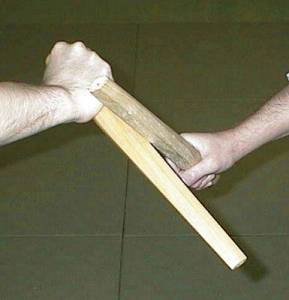
our wooden daggers
First technique (tafel 170): turning back the dagger. Against a downward stab, with reversed grip.
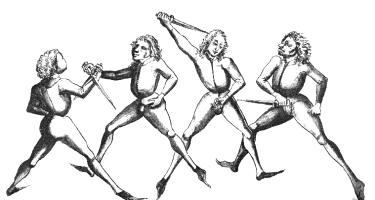




Second technique (tafel 171 and 182): shield and turning back. Against downward stab, defender has dagger in forward grip.
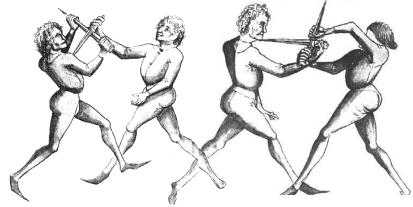




Third technique (tafel 174): Scissors. Against downward stab, defender has dagger in reverse grip.
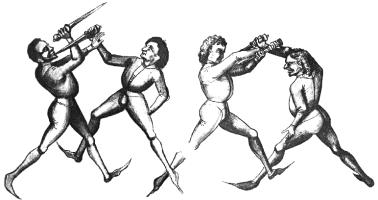


Technique and counter from tafel 176: Jean has attempted a downward stab, Tom has intercepted and pushes against the elbow, ready to move forward and throw Jean. Jean quickly moves to his right, steps behind Tom and throws him (note how Tom's dagger is locked).
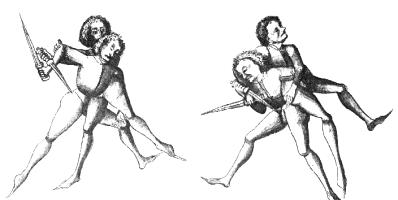



Technique from tafel 181-182: Against an upward stab, the defender has grabbed the attacking arm and breaks it over the shoulder.
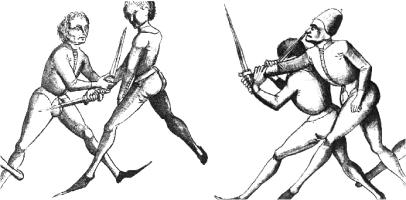
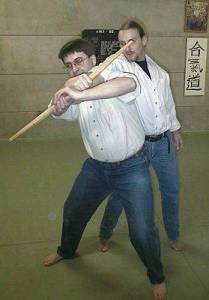
Technique from tafel 173, against a downward stab, circle the arm, put pressure on the elbow and throw.
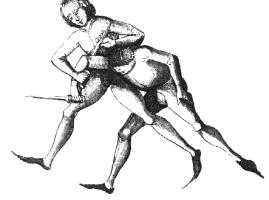
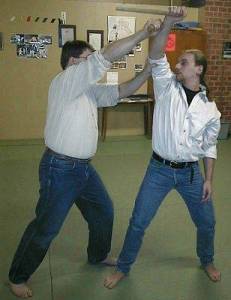
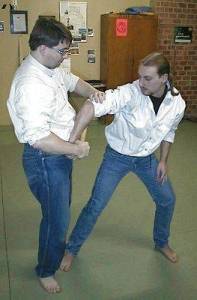
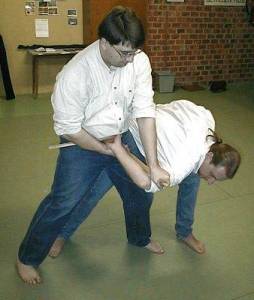
The drawings in Talhoffers Fechtbuch seem to suggest the rondel daggers are double-edged, however most sources confirm they were single edged. It is probable that the drawings show the edge bevel, that started on the center line of the dagger.
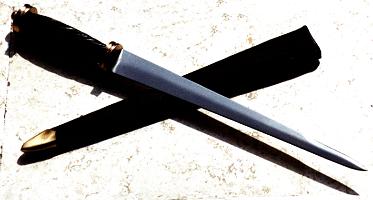
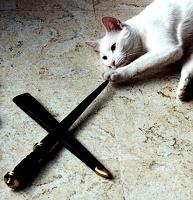
this is a replica rondel dagger made by Fulvio Del Tin, sharpened by Chris
Reeve (of Sebenza fame), scabbard by Christian Fletcher
here studied by our resident ninja, Mughi.
The techniques shown above contain some of the most important principles of Talhoffer, as far as they can be determined from the new edition we use. There is very little explanation, but we can resort to counting the number of times a technique is used. Degen techniques are contained on tafels 170 through 190; each tafel contains two pairs, sometimes showing related techniques, sometimes not. The following numbers are therefor somewhat debatable.
| interesting things | number of occurences |
| techniques | 25 |
| countertechniques | 9 |
| attacker uses downward stab (reverse grip) | 19 |
| attacker uses upward stab (normal grip) | 3 |
| defender uses normal grip | 15 |
| defender uses reverse grip | 10 |
| technique uses "shield" | 4 |
| counters against "shield" | 4 |
| technique uses "scissors" (hard to say which are counters) | 4 |
| technique uses ikkyo-like elbow lock | 4 |
| counters to the elbow lock | 2 |
| defense uses redirection and direct counterstab | 4 |
| techniques that end with throws | 10 |
| sacrifice throws | 2 |
| counters that end with throws | 4 |
| throws that involve lifting a leg with the hands or the knife | 5 |
The following unarmed techniques against dagger are adapted from Achille Marozzo (repeated from faulty memory, that is). These are from the techniques included in Hutton's "Cold Steel." Hutton has (deliberately?) omitted all of Marozzo's techniques that involve grabbing the opponent's blade and wrenching it out of his hand, which are actually almost half of them. I have experimented with this blade-taking with various kinds of knives. As expected, the sharper the knife, the smaller the margin for error. So far I only got a small cut disarming a slim Opinel (the scary sharp carbon steel French knives that rust like hell), probably because I was worried the 1cm wide blade would snap. I've had worse paper cuts. The opponent was disarmed however. So I think it was a valid technique if you were unarmed and someone wanted to kill you.
Seizure:
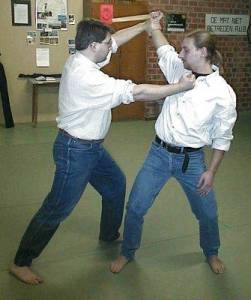

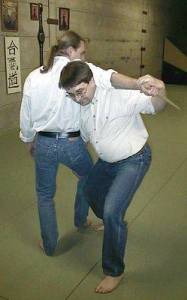
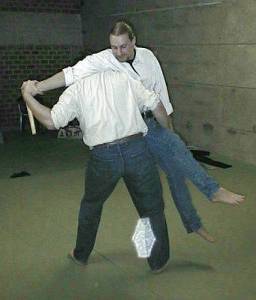
And another:

